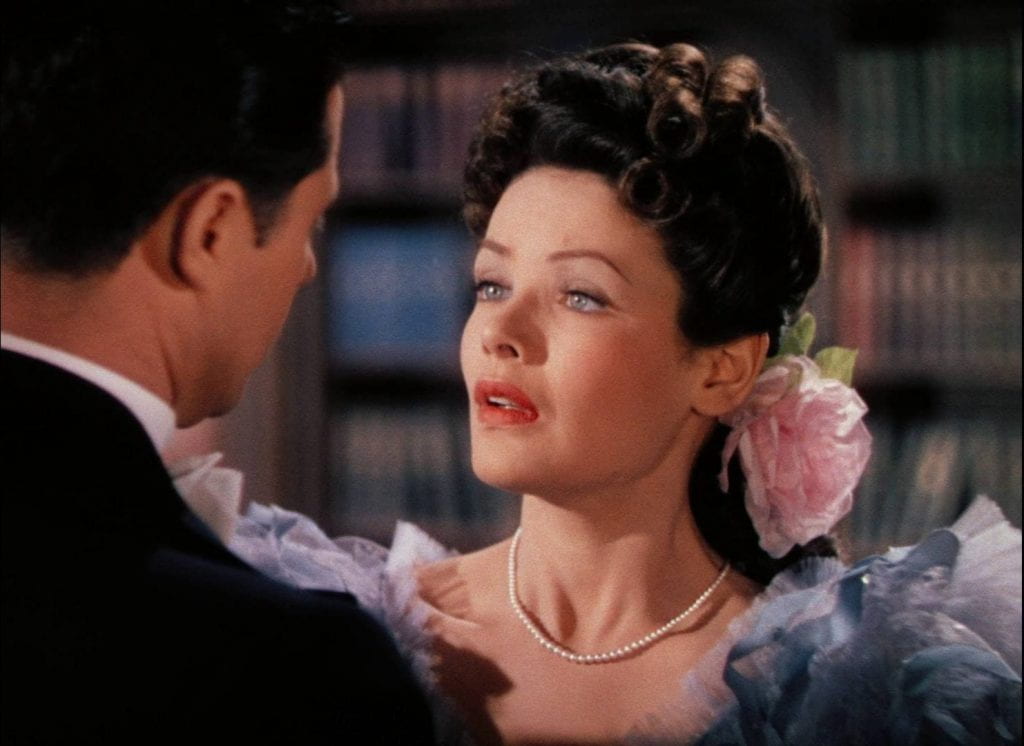
The American studio films of the 1940s represent a great period for truly evocative and audacious uses of color: the lost art of three-strip Technicolor (which can’t be recreated today in exactly the same way — it’s now gone with the original film stock) tinted the world in bold and vivid hues. And yet, even by the high standards of cinema coloring in this period, a select group of films stand out in my mind as being especially adventurous, going so far as to leave the physical world we know far behind and move into some dreamland of personal eccentricity. Among the most gloriously colored ‘40s films are Meet Me in St. Louis (Vincente Minnelli, 1944), Frenchman’s Creek (Mitchell Leisen, 1944), Leave Her to Heaven (John M. Stahl, 1945), The Pirate (Vincente Minnelli, 1948), and She Wore a Yellow Ribbon (John Ford, 1949). But perhaps more brilliant and vibrant than all these is Ernst Lubitsch’s penultimate feature Heaven Can Wait (1943), the master’s only foray into color.
Stunningly photographed by the accomplished cinematographer Edward Cronjager, who also shot Jacques Tourneur’s masterpiece Canyon Passage (1946 — a western with a strange, earthy, brown-green color palette), Heaven Can Wait marries this visual intensity with the serene stylings of art director James Basevi, who also designed Ford’s Yellow Ribbon and 3 Godfathers (1948). The set decoration is by Thomas Little, who recreates the period of the early 1900s in artistically informed yet historically faithful (as far as I can tell) ways. All this unique sensory intoxication is enough to make the film worthy of anyone’s time, especially if one is able to catch it in full display on a big theater screen, as IU Cinema is offering the chance to do later this month.

And yet Heaven Can Wait is also an Ernst Lubitsch film, and of all the works in Lubitsch’s filmography, it’s one of the few that his devout followers seem to be a bit divided on. For one thing, the material is somewhat atypical of Lubitsch; gone are the art deco nightclubs and open sexual mores of his earlier works. Beneath the elegant romantic comedy on display runs a very serious and wistful meditation on death, time, and the meaning of a person’s life.

Another thing that some viewers find objectionable about Heaven Can Wait is its subject matter — the main character is, for lack of a better term, an absolute heel. We follow a rich, spoiled brat (Don Ameche) as he tries to convince the devil the reasons why he belongs in Hell as the scenes of his preceding life play out before us. In my opinion, Heaven Can Wait pulls off one of the most difficult feats of any artwork: it makes us care about someone who we might normally find shallow or even a bit contemptible. It reminds us that good art can increase our empathy for others. In this regard, the film is totally sublime. To know Lubitsch’s movies is to experience the transformative power of cinema at its absolute best.

Heaven Can Wait screens at IU Cinema on October 24 at as part of the Sunday Matinee Classics: A Century of Tierney series. The series will then continue with two other great films, Leave Her to Heaven on November 14 and Laura on December 5.


Jack Miller enjoys the films of Howard Hawks, Jacques Tourneur and John Ford. He graduated from Indiana University with a BA in English, and currently resides in Chicago. He also enjoys listening to country and disco music.